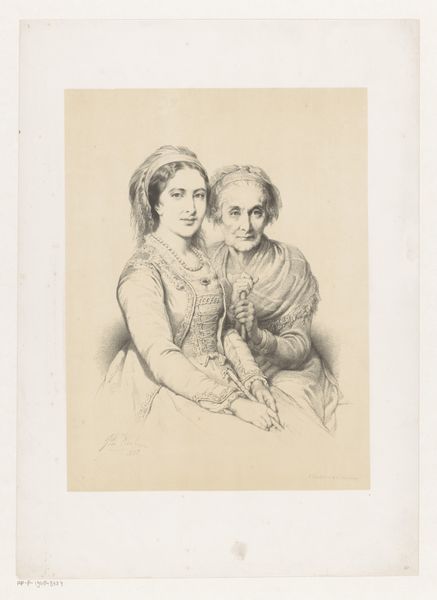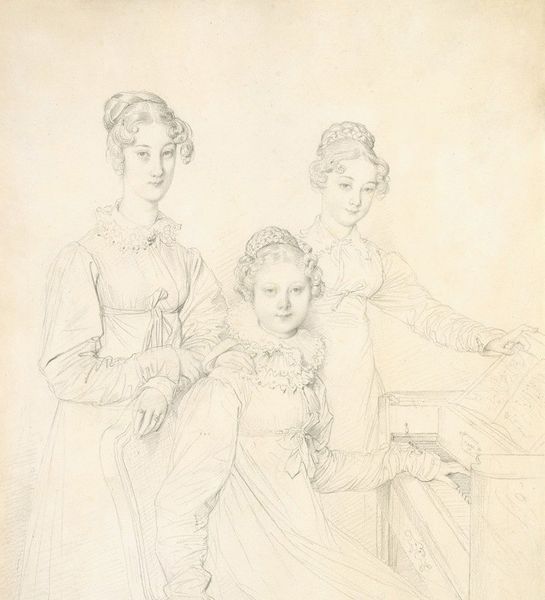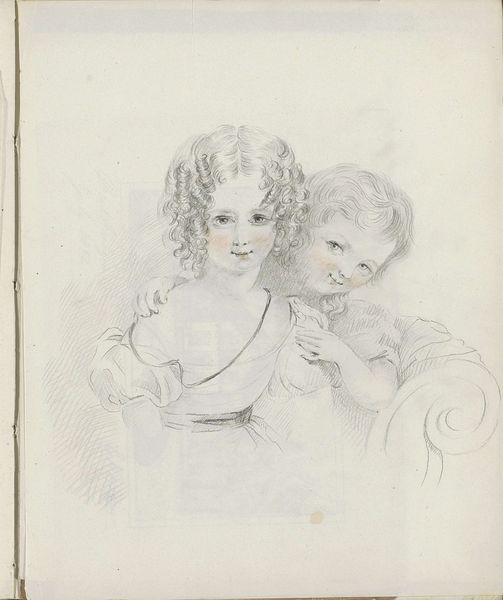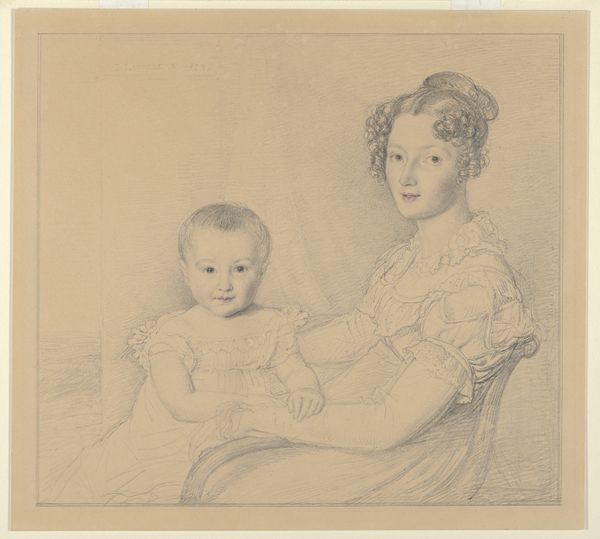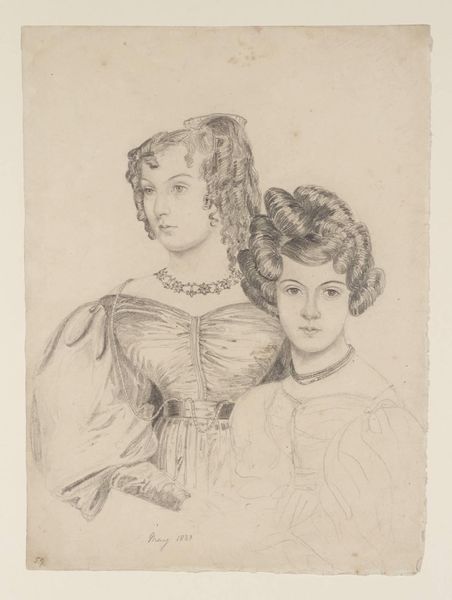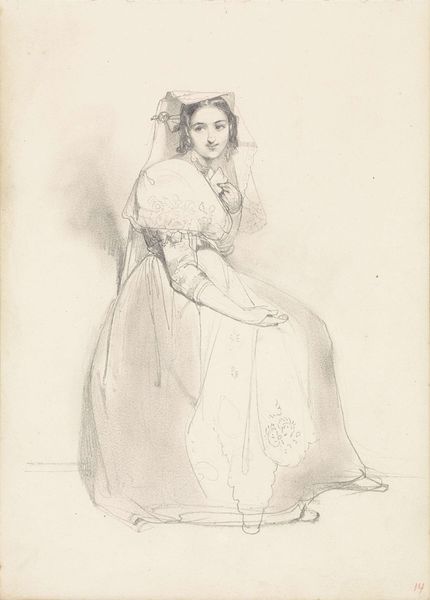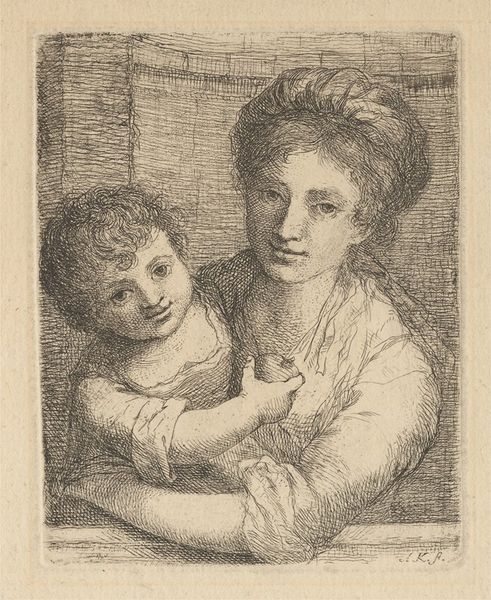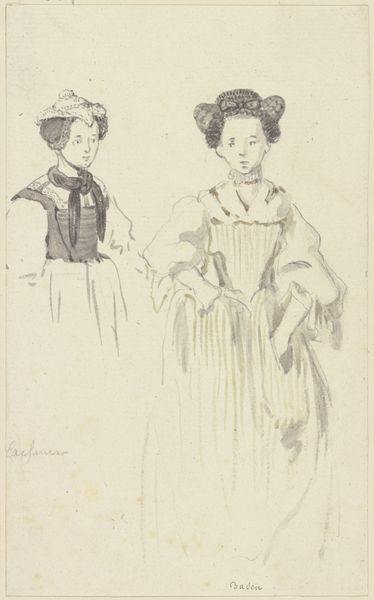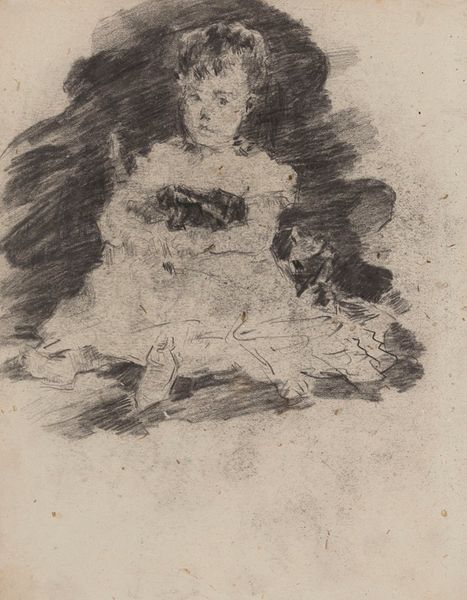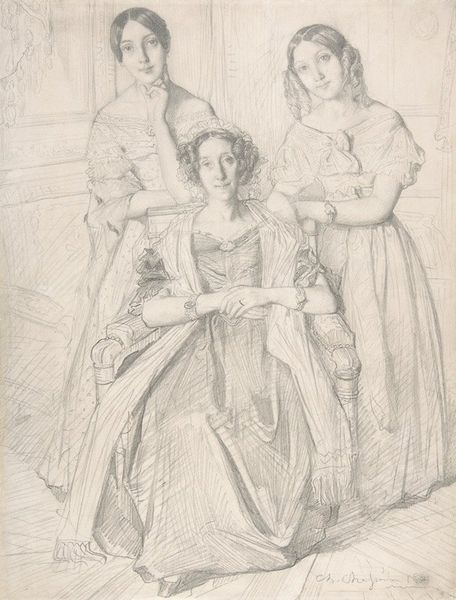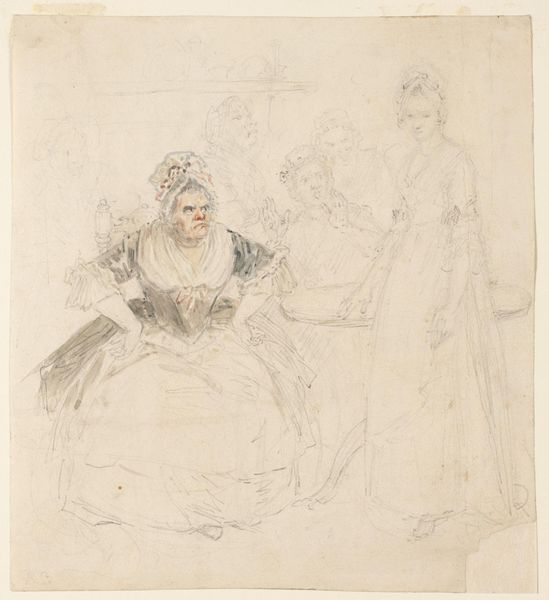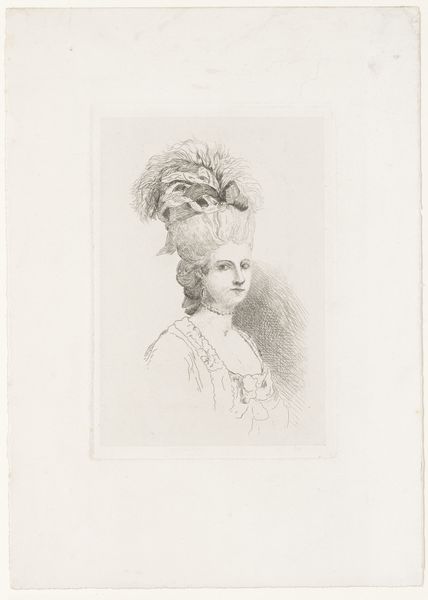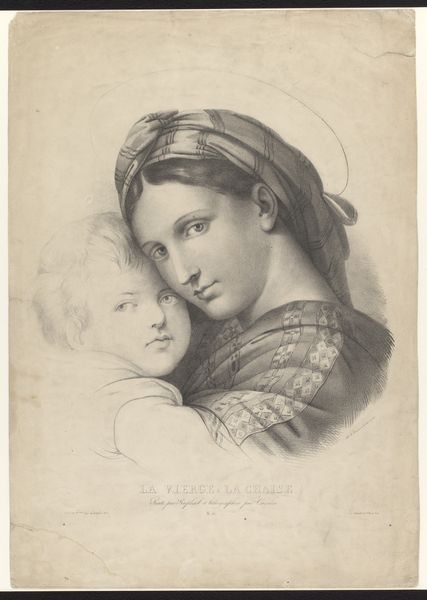
Dimensions: height 178 mm, width 152 mm
Copyright: Rijks Museum: Open Domain
Curator: This delicate pencil drawing, entitled "Two Young Girls Leaning Against Each Other," is attributed to Johan Hendrik Koelman and dates from the period between 1830 and 1887. It is currently housed here at the Rijksmuseum. Editor: My first thought is just how intimate this portrait feels, even in its unfinished state. It's all soft lines and subtle gradations—almost a whisper of an image. The girls seem deeply connected, don't you think? Curator: Indeed. We see Koelman carefully layering the graphite, achieving those luminous skin tones, all from a humble pencil and paper. I'm interested in how a relatively simple material could be crafted with such detail. One could also imagine the social performance involved: How does one pose, who gets to be seen? And what statements does this reinforce? Editor: It makes you wonder about the relationship between the girls, doesn't it? Are they sisters, close friends, or even... something more? The Romantic period was so full of explorations of female bonds, sometimes pushing boundaries. There is clearly also a racial dimension to the contrast of fair and dark hair; this choice serves the image-making. And this era does have particular connotations of the power and wealth to have access to an artist. Curator: Absolutely. Koelman was working within the conventions of portraiture that provided an income for him and sustained him. In considering the historical context, you cannot look beyond its use of readily accessible pencils as his means of creation—and its role in providing the opportunity to render social expectations into forms that are still valued. Editor: It is also thought provoking to consider the role these girls might have been afforded beyond that: in what capacities did these subjects shape their lives? And in this context, one is compelled to ask, what is it that survives? The materiality is key to understanding who and how they came to live, with Koelman capturing these ephemeral figures through this drawing. Curator: Precisely. Through a close study of the pencil strokes and paper, we glimpse not just the representation but also a slice of 19th-century life and its material production. It offers a tactile connection to a past mediated by the physical tools and their societal position. Editor: It reminds us that even seemingly straightforward portraits can be powerful cultural artifacts laden with hidden narratives waiting to be uncovered. Curator: A potent demonstration of material's role in immortalizing lives.
Comments
No comments
Be the first to comment and join the conversation on the ultimate creative platform.
